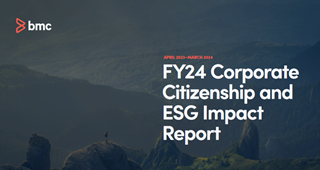As we head deeper into the fall and winter and move toward end-of-year and holiday responsibilities, Health Literacy Month, running now through Halloween, is a great opportunity for some self-care, taking the time to stop, listen to your mind and body, see a healthcare provider, if necessary—and most importantly, be your own health advocate.
Defining health literacy
Health Literacy Month is about making information about our physical and mental health more available and understandable so we can make informed choices. In the United States, the Department of Health and Human Services has launched an initiative it’s calling “Healthy People 2030.” While its 358 objectives aim to “eliminate health disparities, achieve health equity, and attain health literacy to improve the health and well-being of all,” the initiative also has a tandem focus on boosting personal and organizational health literacy, which it defines as:
- Personal health literacy: The degree to which individuals have the ability to find, understand, and use information and services to inform health-related decisions and actions for themselves and others.
- Organizational health literacy: The degree to which organizations equitably enable individuals to find, understand, and use information and services to inform health-related decisions and actions for themselves and others.
Claiming our right to health literacy
Telemedicine has changed how we think about doctor visits. Anyone with an internet connection can now access a wide array of medical professionals. That includes an expansion of medical expertise to retired and vulnerable populations after Medicare and Medicaid agreed to cover those appointments, as well as people in rural communities. The mainstreaming of telemedicine also shifted some of the responsibility to us to make the most of our virtual visits and understand our own health better.
So, where can you find information that’s actually useful and easy to understand so you’re well prepared when you do seek professional guidance? These are all good—and legitimate—websites:
- The Office of Disease Prevention and Health Promotion (ODPHP) has created Health Literacy Online.
- MyHealthfinder provides easy-to-understand consumer resources.
- Register with the Institute for Health Literacy’s Health Solutions Center to access a range of free resources.
- The Mayo Clinic and NHS have A to Z guides to symptoms, conditions, treatments, and more.
- The U.S. National Library of Medicine’s Medline Plus has a complete index of resources and offers multilingual health information.
After you’ve made an appointment with a physician, be the squeaky wheel. Arm yourself ahead of time by writing down all your questions. And once you’re in the room, insist on going through them until you completely understand the information provided to you about your health, medications, diagnoses, treatments, prognosis, and so on. Take notes, and if it helps, take a family member or a trusted friend with you to be an extra set of ears.
The business impact of health literacy
Looking after our health not only impacts us, but the overall workforce and businesses, as well. In 2021, the former U.S. Surgeon General, Jerome Adams, M.D., issued a version of his Community Health and Economic Prosperity report in a digest form for business leaders—the first time that’s been done. According to the report, “Poor health generates costs for employers, such as greater healthcare expenses; and higher rates of disability, absences for illness and medical appointments, and presenteeism (working while sick) generate indirect costs that reduce workforce productivity and contribute to declines in labor force participation.”
That’s a strong motivator for businesses to promote health and wellness. And businesses and employers can take concrete steps to help their workforce stay healthy—and happy, starting with providing access to better health information and healthcare providers. A recent global Adecco report found there’s still a disconnect on how well companies are succeeding at that. While 74 percent of companies said the well-being of their workers was extremely or very important to them, only 55 percent of employees felt they received enough support for that “always” or “most of the time”—and 45 percent said “not really” or “never.”
McKinsey’s recently released Employer Health Benefits Survey revealed that 80 percent of employers now offer or are interested in offering specialized health management solutions in areas like diabetes, hypertension, musculoskeletal, and behavioral health. And amid the Great Resignation and Reshuffle, 66 percent of employers are now reporting that health benefits are very important to their hiring and retention efforts—a jump of 11 points from before the pandemic.
The importance of mental health
October also marks World Mental Health Day, and mental health is an integral part of an overall health and wellness plan, especially with the stressors of the pandemic and changing work expectations. According to a recent international pulse survey by Future Forum, a consortium launched by Slack with founding partners Boston Consulting Group, MillerKnoll, and MLT, the employee experience is declining for employees who are losing flexibility in how and where they work. Knowledge workers with “little to no” ability to set their own hours report 3.4x worse work-related stress and anxiety and 2.2x worse work-life balance.
In our blog post on mental health resiliency, we addressed mental health in the workplace, and the importance employers must place on including mental health in their comprehensive health and wellness programs.
BMC’s health and wellness approach
At BMC, health and wellness is part of our BMC Cares program, both for our employees and the larger communities we serve around the world, in alignment with the United Nations Sustainable Development Goal #3, “Ensure healthy lives and promote well-being for all at all ages.”
BMC has repeatedly been recognized by the American Heart Association, and in 2024, we ranked at the Gold Tier on its Well-being Works Better™ Scorecard, which measures our healthy work culture and environment against our peers. That includes our comprehensive benefits offerings and a focus on the health and wellness of the body and mind through diversity, equity, and inclusion (DEI) initiatives, employee resource groups (ERGs), and extensive volunteerism.
Paying it forward
As part of our BMC Cares program, BMC and its employees foster global health literacy through volunteerism and donations.
On Saturday, October 19, our workforce around the world participated in our 11th annual Global Move, an organized fitness event where we encourage our 6,000+ employees to move, walk, run, swim, or bike for 100 minutes to fundraise in support of 100 tech nonprofits driving real change in education, healthcare, human rights, and sustainability through our partner, Fast Forward.
Throughout the year, we also support a number of health and welfare organizations and we invite you to join us in our efforts:
- Vaccine On Wheels aims to immunize India’s underserved population by “ensuring access to quality vaccination for all.” It operates India’s only mobile vaccination service capable of handling adverse events (such as COVID-19) through immunizations.
- Nutre a un Niño works with rural communities in situations of poverty in Mexico to promote child nutrition through projects that also guide their social, economic, and environmental development.
- The Humsafar Trust provides resources, workshops, medical screenings, and treatments to the LGBTQ community in India.
- The Lions Barber Collective is a group of international barbers raising awareness in their field for suicide prevention and mental well-being among their customers.
- National Pediatric Cancer Center Foundation is a nonprofit organization dedicated to research and clinical trials to find less toxic, more effective treatments for childhood cancer; reduce the side effects of current treatments; improve survival rates, and ultimately eliminate childhood cancer.
While Health Literacy Month spans October, November keeps the momentum going with Movember, the annual global initiative that raises awareness of men’s health issues by encouraging men to grow out their facial hair or be physically active. Movember is the month’s namesake charity organization, driven by its mantra, “Whatever you grow, however you mo, will save a bro,” and dedicated to providing services and support for mental health, suicide prevention, prostate cancer, and testicular cancer. In its 21 years, the organization has funded more than 1,320 projects with 20 partners in 20 countries.
The more we know about our health—and empower ourselves to take care of it—the more we heal and grow so we can participate fully in our families, our work, and our communities. By fostering an environment that’s beneficial for the whole employee experience, and the whole employee, everybody wins.







